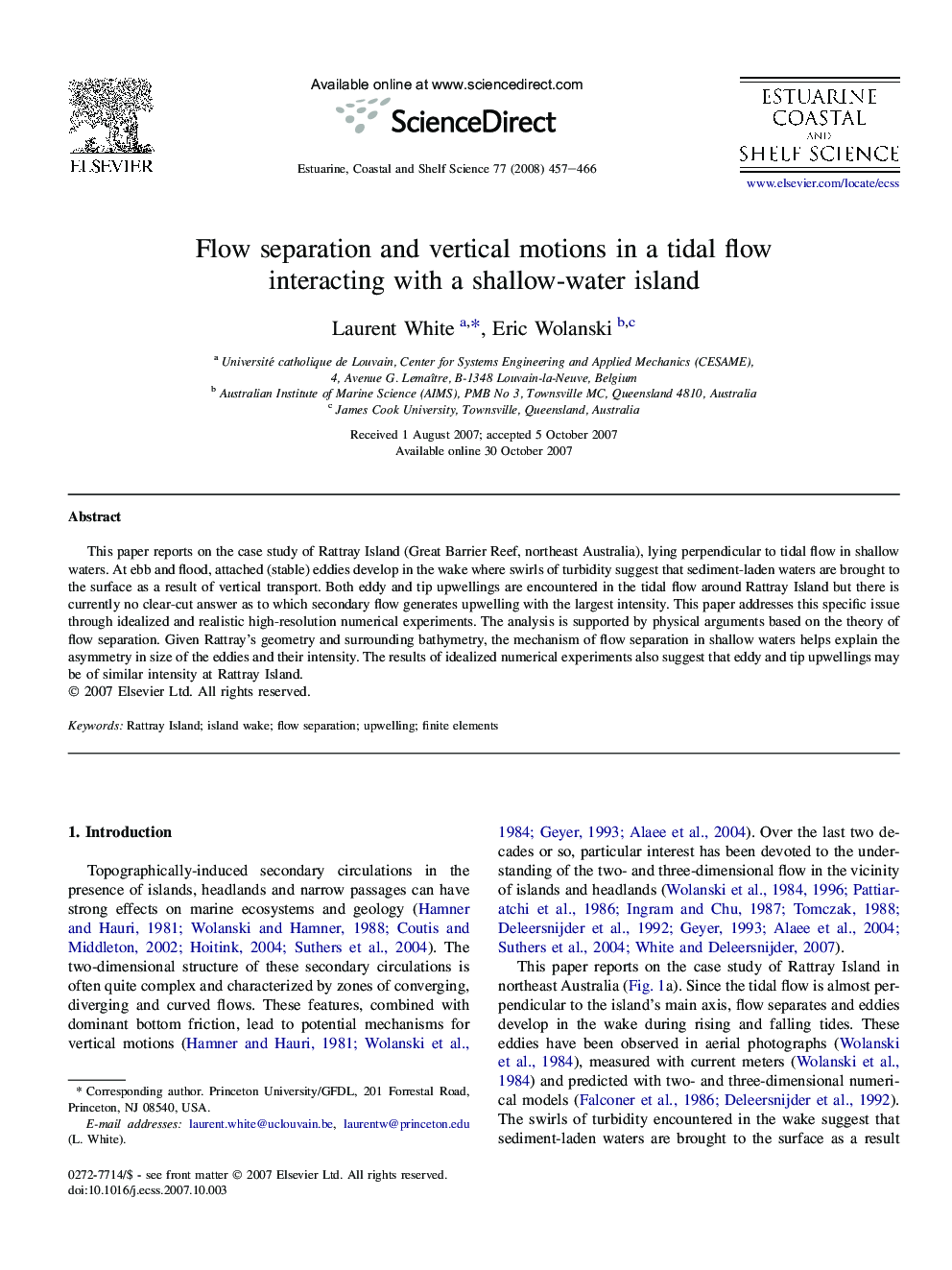| Article ID | Journal | Published Year | Pages | File Type |
|---|---|---|---|---|
| 4541669 | Estuarine, Coastal and Shelf Science | 2008 | 10 Pages |
This paper reports on the case study of Rattray Island (Great Barrier Reef, northeast Australia), lying perpendicular to tidal flow in shallow waters. At ebb and flood, attached (stable) eddies develop in the wake where swirls of turbidity suggest that sediment-laden waters are brought to the surface as a result of vertical transport. Both eddy and tip upwellings are encountered in the tidal flow around Rattray Island but there is currently no clear-cut answer as to which secondary flow generates upwelling with the largest intensity. This paper addresses this specific issue through idealized and realistic high-resolution numerical experiments. The analysis is supported by physical arguments based on the theory of flow separation. Given Rattray's geometry and surrounding bathymetry, the mechanism of flow separation in shallow waters helps explain the asymmetry in size of the eddies and their intensity. The results of idealized numerical experiments also suggest that eddy and tip upwellings may be of similar intensity at Rattray Island.
